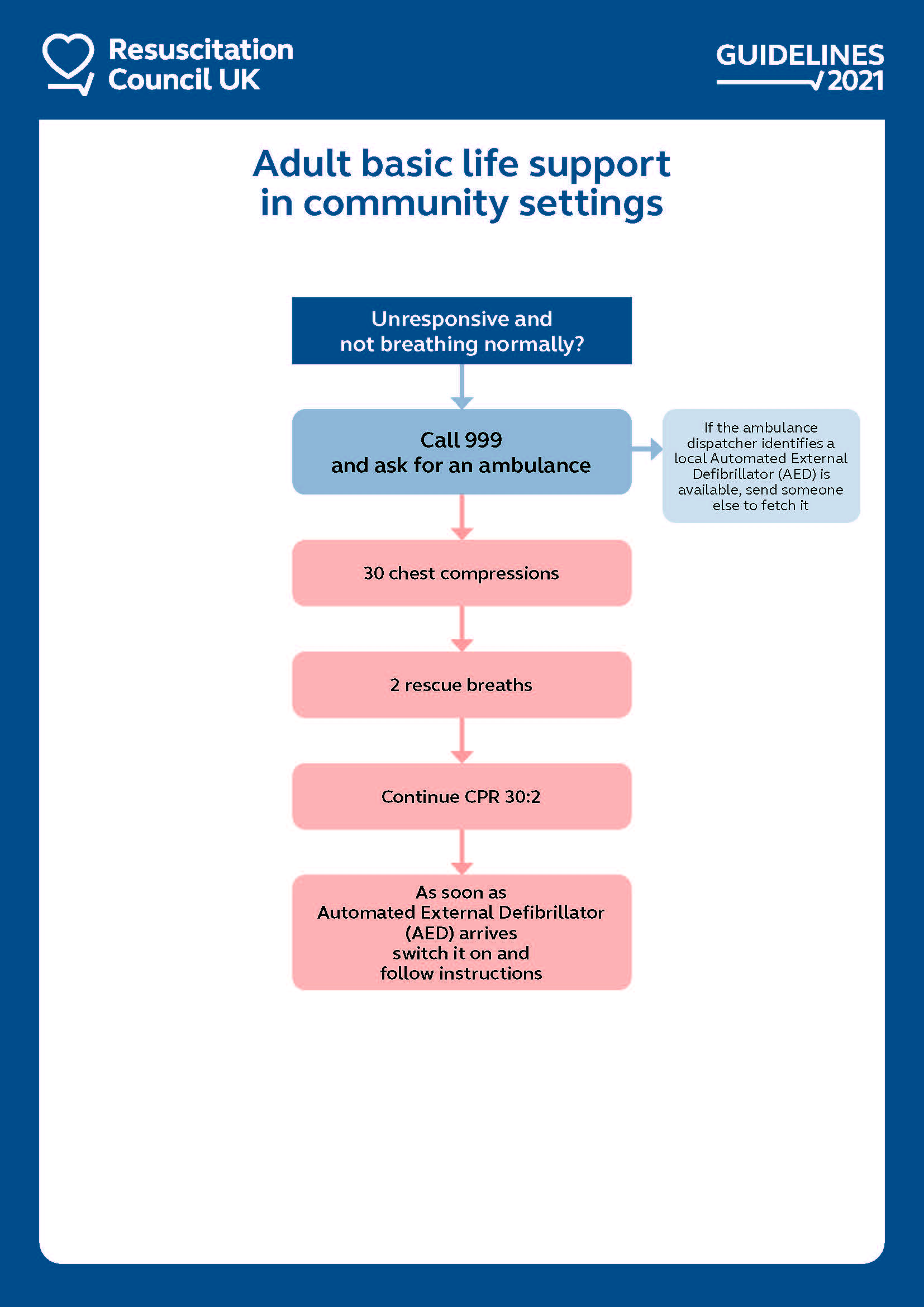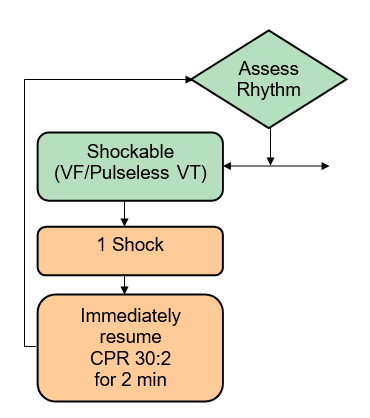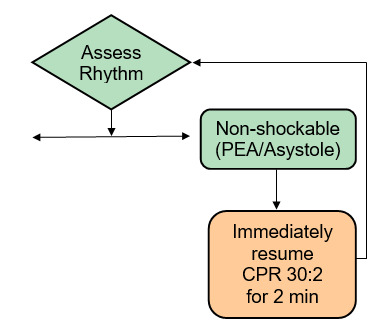Adult Life Support with a defibrillator

It is important good quality chest compressions (depth 5-6cm, rate 100-120 bpm) and effective ventilations (2 breaths in 5 seconds) are carried out a ratio of 30:2 with minimal interruptions. Without this it is extremely unlikely that a return of spontaneous circulation will be achieved.
Once the AED is present it should be turned on. The AED will prompt the rescuers to attach the pads to the patient’s bare chest and plug in the connector to the AED. One pad should be placed to the right of the upper sternum just below the clavicle and the other pad placed in the mid axillary line lateral and inferior to the pectoralis tissue. To assist this most pads have a picture on their reverse to prompt correct placement. CPR should not be interrupted while the pads are being placed on the patient’s chest.

Once the pads are placed on the patient’s chest the AED will instruct the rescuers to stand clear while analysing the heart rhythm. The AED will then identify whether this is a shock able or non-shock able rhythm.
Once the AED has identified a shock able rhythm, it will advise that a shock should be delivered and inform the rescuers that the AED is charging. During this time, current guidance suggests that CPR should be continued right up to the point when the shock is delivered. Unfortunately most AEDs will not allow this and if they detect movement will stop charging. This highlights the importance of individual practitioners being familiar with their own equipment.
The newer AED models e.g. FR3+ do allow CPR while charging. While using manual defibrillators CPR should be maintained until the defibrillator is charged. It is essential that the operator of the AED ensures all other personnel have moved away and any oxygen source is removed before delivering the shock to the arrested player.

Once the shock has been delivered CPR should be recommenced without delay. Even if the defibrillation has been successful there will be a transient period of cardiac myocardial stunning resulting in cardiac output being insufficient to perfuse the vital organs. Hence CPR should be continued for 2 minutes unless there are signs of life.
After 2 minutes the AED will instruct the rescuers to stand clear whilst it analyses the heart rhythm. If the AED advises a further shock than this should be delivered and the “shockable” cycle repeated. If at any time the ED advises that a shock is not required (“no shock advised”) the rescuer should move to the “non shockable side of the algorithm.
If using a manual defibrillator the rescuer will not receive a prompt at 2 minutes. Hence, in this situation, two minutes will need to be timed. A rough approximation of 2 minutes is ten breathes during a 30:2 CPR. The 2 minute period of CPR should be completed with 30 compressions after the 10th breath has been delivered.
Non Shock able cardiac arrest rhythms
When the AED identifies a non-shock able rhythm it will state “no shock advised” and will suggest starting CPR. In the arrested player CPR should be commenced immediately starting with chest compressions for 2 minutes. After 2 minutes the AED will ask the rescuers to stand clear while analysing the heart rhythm. If there is still “no shock advised” the rescuer should perform CPR for a further 2 minutes and the cycle will repeat. If the AED advises a shock this should be delivered and the “shockable” cycle followed.
The non-shock able algorithm is summarised in the below diagram:

During the treatment of an arrested patient if there are signs of life, then an ABC check of the player should be undertaken to check if there has been a return of spontaneous circulation.
Please see the Appendix at the end of this chapter for variation examples from the American Heart Association and Australia New Zealand Committee on Resuscitation (ANZCOR)